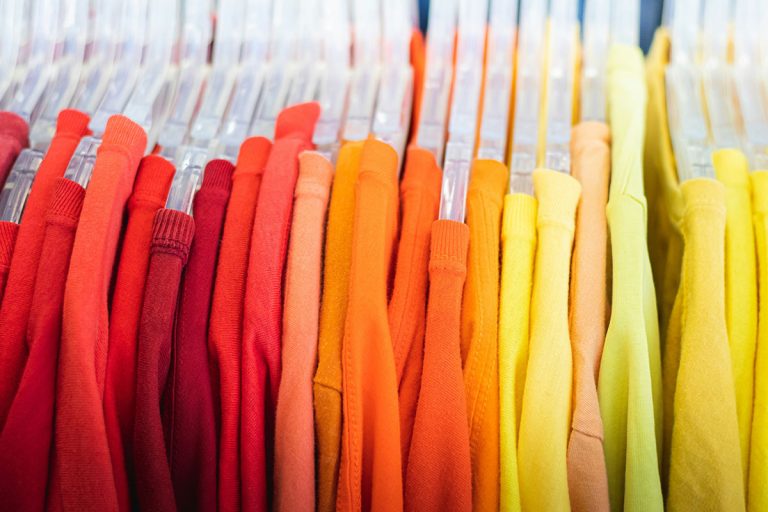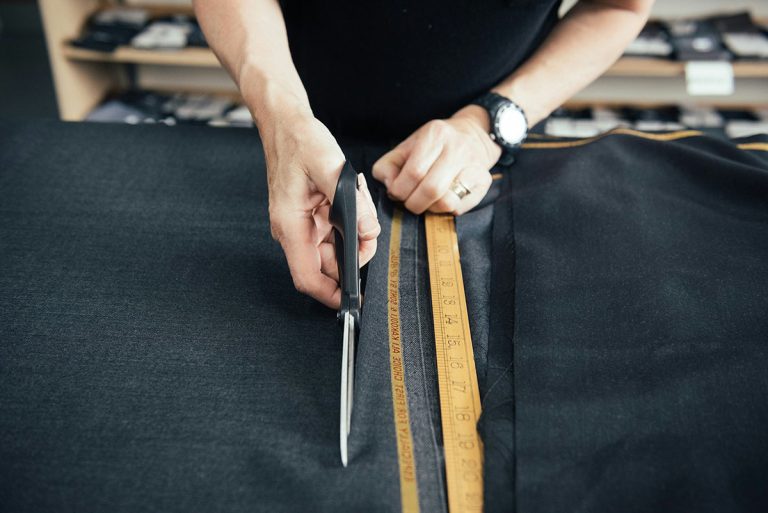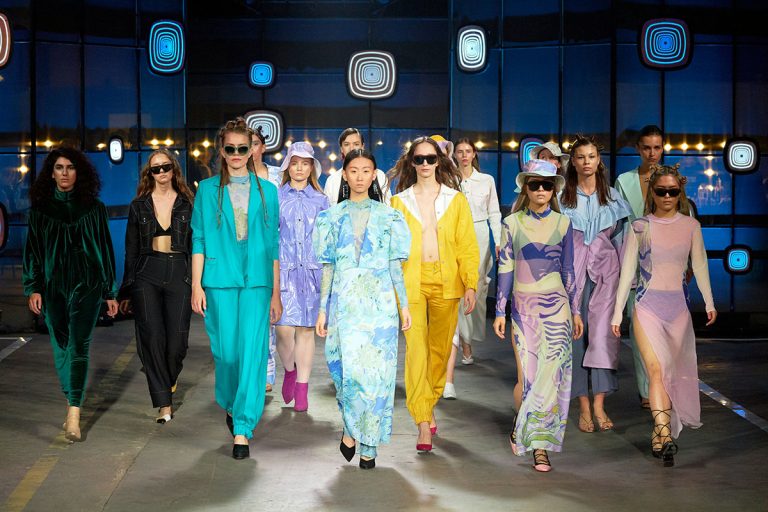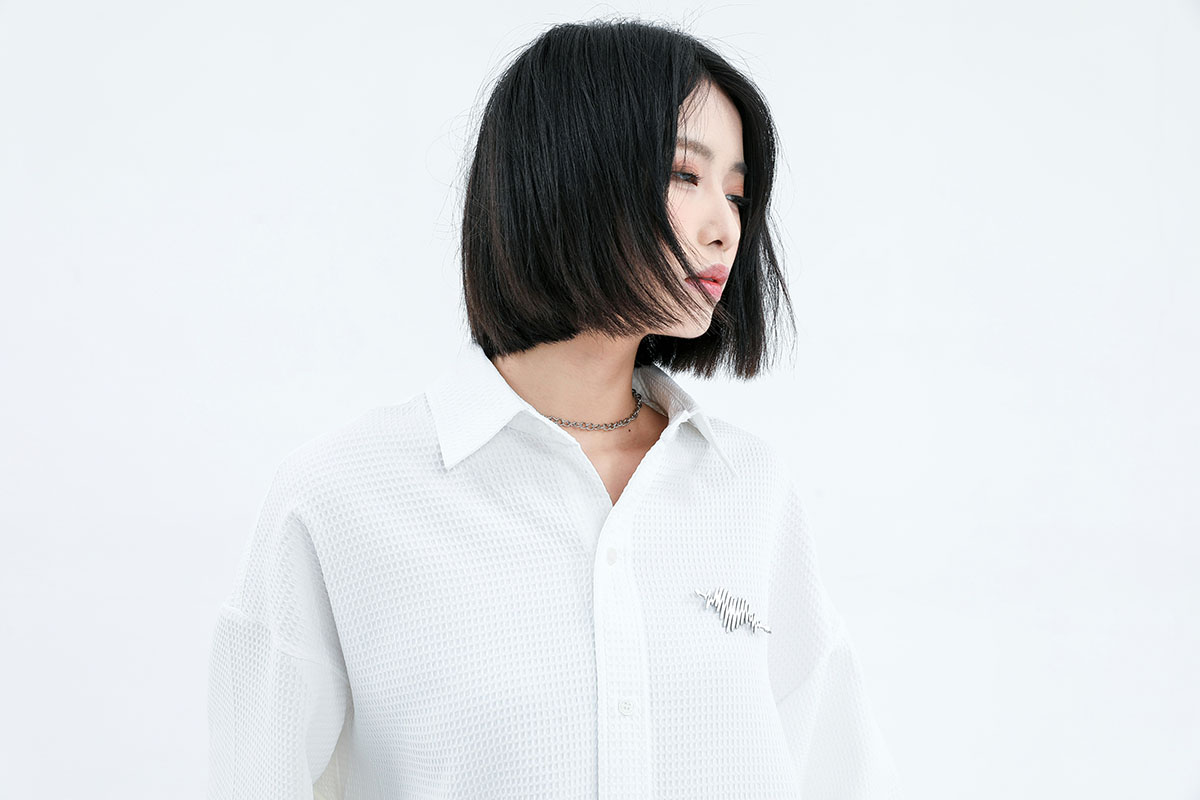
Korean fashion has transcended its geographical boundaries to become a global phenomenon, influencing wardrobes from New York to Mumbai. What makes K-fashion so universally appealing isn’t just its connection to K-pop and K-dramas—it’s the perfect blend of practicality, innovation, and aesthetic appeal that adapts seamlessly to different cultures and climates. This style revolution offers something rare in fashion: trends that are simultaneously cutting-edge and wearable, modest yet expressive, affordable yet aspirational.
The Rise of K-Fashion on the Global Stage
Beyond the Hallyu Wave
While Korean pop culture certainly amplified K-fashion’s reach, the style movement stands on its own merits. Korean fashion emphasizes quality basics, innovative layering, and a unique approach to proportions that flatters diverse body types. Unlike Western fast fashion’s disposable mentality or European luxury’s exclusivity, K-fashion occupies a sweet spot of accessible sophistication.
The Korean fashion industry’s emphasis on functionality stems from practical needs—extreme seasonal variations, urban living, and a culture that values both professionalism and self-expression. These same needs resonate globally, making K-fashion solutions universally applicable.
Why K-Fashion Translates Across Borders
Korean fashion succeeds internationally because it prioritizes versatility over singularity. A typical K-fashion piece works as well in Seoul’s humid summers as in London’s drizzly springs, in conservative Middle Eastern settings as in casual California. This adaptability isn’t accidental—it’s designed into every garment through thoughtful details like adjustable lengths, removable layers, and modest yet modern silhouettes.
Essential K-Fashion Elements for Every Wardrobe
The Oversized Blazer Revolution
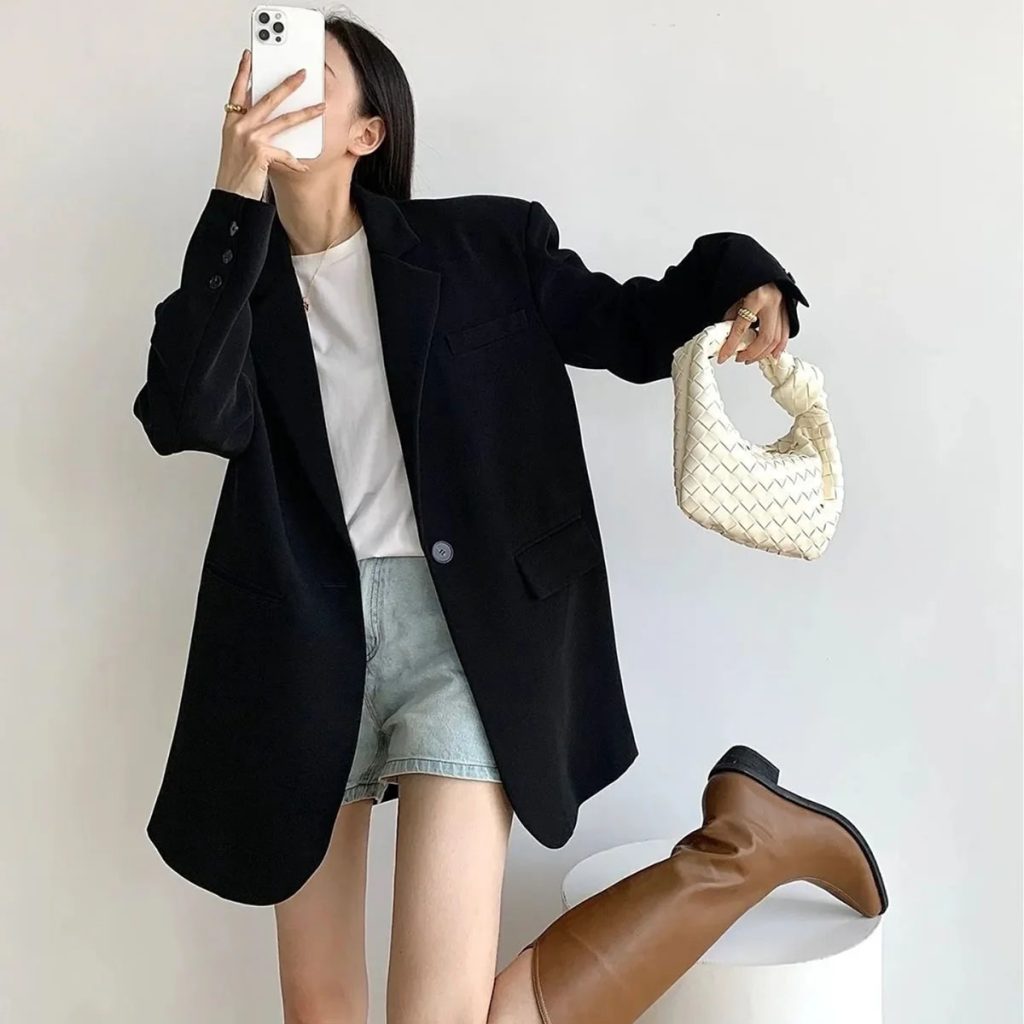
Korean fashion transformed the blazer from stuffy professional wear into a versatile style statement. K-fashion blazers feature:
- Exaggerated shoulders that create a powerful silhouette without requiring perfect tailoring
- Longer lengths that work as light coats in transitional weather
- Unstructured construction that layers comfortably over everything from t-shirts to sweaters
Style tip: Choose blazers in neutral tones like beige, charcoal, or soft pastels. These colors complement various skin tones and mix easily with existing wardrobes.
The Art of the Perfect White Shirt
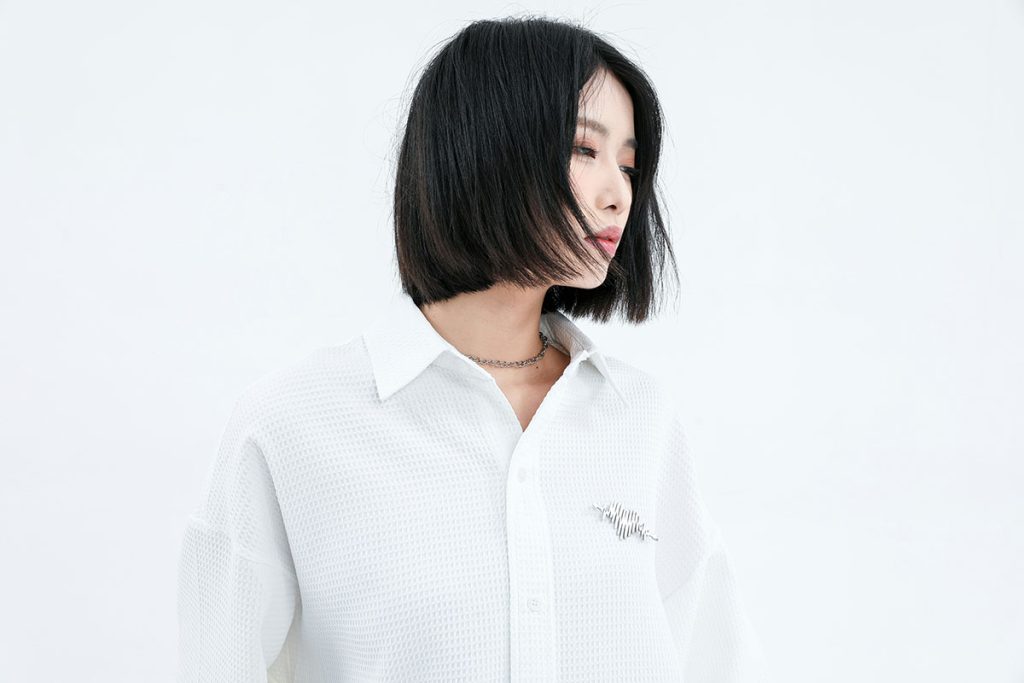
Korean fashion elevates the basic white shirt through subtle design innovations:
- Interesting collar details like oversized peter pan collars or architectural stand collars
- Strategic oversizing that allows for various styling options
- Premium cotton blends that maintain structure while allowing movement
These shirts work tucked into high-waisted bottoms for a polished look or worn loose as a light layer—perfect for modest dressing requirements or unpredictable weather.
High-Waisted Everything
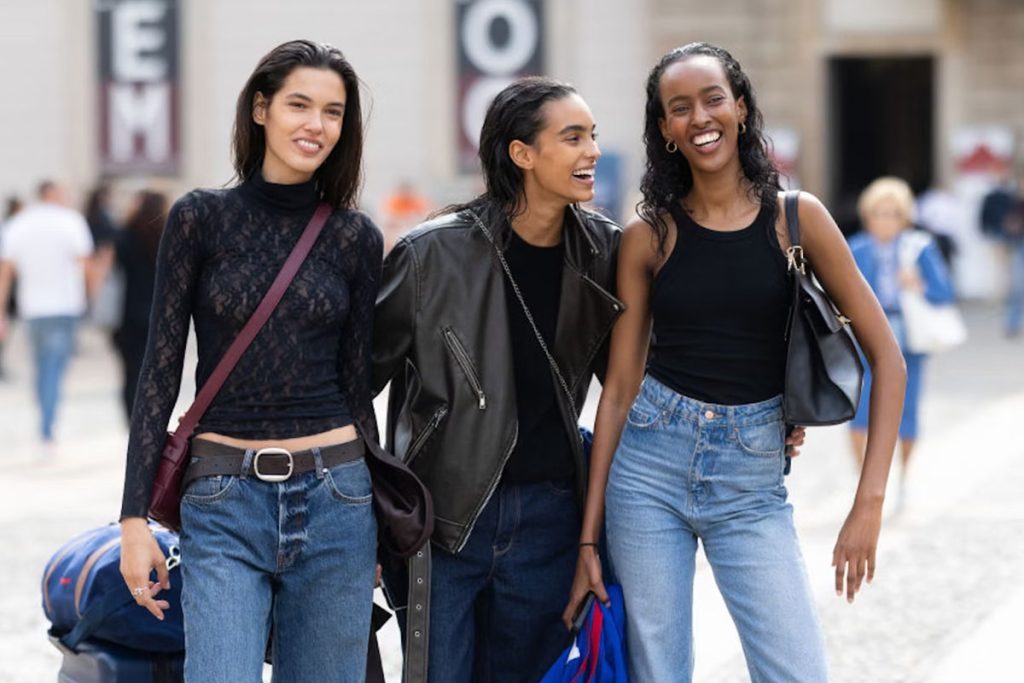
Perhaps no K-fashion element has proven more universally flattering than the high-waisted bottom. From wide-leg pants to A-line skirts, this proportion trick:
- Creates the illusion of longer legs regardless of height
- Provides comfortable coverage for various cultural modesty requirements
- Allows for easy mixing of fitted and loose pieces
Adapting K-Fashion to Different Climates
Tropical and Humid Climates
Korean summers are notoriously humid, making K-fashion naturally suited for tropical environments:
Breathable Fabrics: Look for Korean-style pieces in linen blends, cotton gauze, and technical fabrics that wick moisture while maintaining structure.
Strategic Cropping: K-fashion’s cropped pants and three-quarter sleeves provide coverage while allowing air circulation—perfect for hot climates where full-length clothing feels stifling.
Light Layers: Sheer cardigans, kimono-style jackets, and loose button-ups provide sun protection without trapping heat.
Cold and Variable Climates
Korean fashion’s layering expertise shines in colder regions:
The Long Padded Coat: Korea’s answer to winter combines maximum warmth with sleek silhouettes. These coats often feature:
- Water-resistant materials
- Adjustable hoods and cuffs
- Lengths that protect without impeding movement
Smart Layering Systems: Base layers, knit vests, and shell jackets create adaptable outfits for temperature swings.
Temperate Climates
For mild, changeable weather, K-fashion’s transitional pieces excel:
- Trench coats with removable linings
- Knit sets that work separately or together
- Lightweight scarves that add warmth without bulk
Cultural Adaptability in K-Fashion
Modest Fashion Solutions
K-fashion naturally aligns with modest dressing preferences across cultures:
Length Options: Midi and maxi lengths dominate, offering coverage without sacrificing style Layering Pieces: Undershirts, arm warmers, and legging-pants provide customizable coverage Loose Silhouettes: Flowing shapes respect modesty requirements while maintaining modern aesthetics
Professional Settings Worldwide
Korean office fashion translates seamlessly to international professional environments:
- Clean lines and minimal embellishment read as polished globally
- Neutral color palettes work across cultural contexts
- Quality fabrics and construction convey professionalism
Casual Universal Appeal
K-fashion’s casual pieces work everywhere because they balance comfort with intentionality:
- Elevated loungewear that transitions from home to street
- Sporty elements mixed with structured pieces
- Accessories that add personality without overwhelming
Key Pieces to Start Your K-Fashion Journey
The Investment Essentials
- A Quality Oversized White Shirt ($40-80): The foundation of countless K-fashion looks
- High-Waisted Wide-Leg Pants ($50-100): Flattering and versatile across seasons
- A Structured Bucket Hat ($20-40): Sun protection meets style statement
- Layering Turtlenecks ($25-50): Essential for achieving K-fashion’s signature layers
- A Modern Hanbok-Inspired Piece ($60-120): Adds unique flair while respecting cultural roots
Budget-Friendly Additions
- Basic ribbed tanks for layering
- Crossbody bags in neutral tones
- Simple gold jewelry
- White sneakers with interesting details
- Solid-color socks for the exposed-sock trend
Styling K-Fashion for Your Lifestyle
The Minimalist Approach
Focus on K-fashion’s clean lines and neutral palette:
- Monochromatic outfits in varying textures
- Simple silhouettes with one statement piece
- Quality basics mixed with affordable trends
The Maximalist Interpretation
Embrace K-fashion’s playful side:
- Mix prints and textures confidently
- Layer unexpected pieces
- Add Korean beauty trends like gradient lips or glass skin
The Practical Translation
Adapt K-fashion’s functionality to your needs:
- Choose pieces with pockets and adjustable elements
- Invest in weather-appropriate fabrics
- Focus on versatile items that work across your lifestyle
The Future of Global K-Fashion
As Korean fashion continues evolving, its international influence grows stronger. The emphasis on sustainability, size inclusivity, and cultural respect positions K-fashion as a leader in responsible global fashion. Whether you’re drawn to its aesthetic appeal, practical solutions, or cultural significance, K-fashion offers a refreshing alternative to traditional fashion hierarchies.
The beauty of K-fashion lies not in slavishly copying Seoul street style but in understanding its principles—versatility, functionality, and thoughtful design—and applying them to your unique context. As fashion becomes increasingly global, K-fashion’s adaptive approach provides a blueprint for style that respects both individual expression and cultural diversity.
Frequently Asked Questions
Q: Do I need to be young and slim to wear K-fashion?
A: Not at all! K-fashion’s oversized silhouettes, high-waisted cuts, and layering techniques are actually more size-inclusive than many Western trends. The key is choosing pieces that work with your body, not against it.
Q: How can I incorporate K-fashion into a conservative dress code?
A: K-fashion naturally leans modest with longer hemlines, higher necklines, and layering options. Focus on structured blazers, midi skirts, and wide-leg pants that meet dress code requirements while maintaining style.
Q: Where can I buy authentic K-fashion outside of Korea?
A: Many Korean brands now ship internationally through sites like YesStyle, StyleNanda, and W Concept. Additionally, global retailers like Uniqlo and COS offer pieces that align with K-fashion aesthetics.
Q: Is K-fashion expensive?
A: K-fashion spans all price points. While some designer brands are pricey, the movement emphasizes mixing high and low pieces. Many trends can be achieved with affordable basics styled creatively.
Q: How do I avoid looking like I’m wearing a costume?
A: Start with one or two K-fashion elements mixed with your existing wardrobe. Focus on principles like proportion play and layering rather than copying exact outfits. Adapt trends to suit your lifestyle and cultural context.
